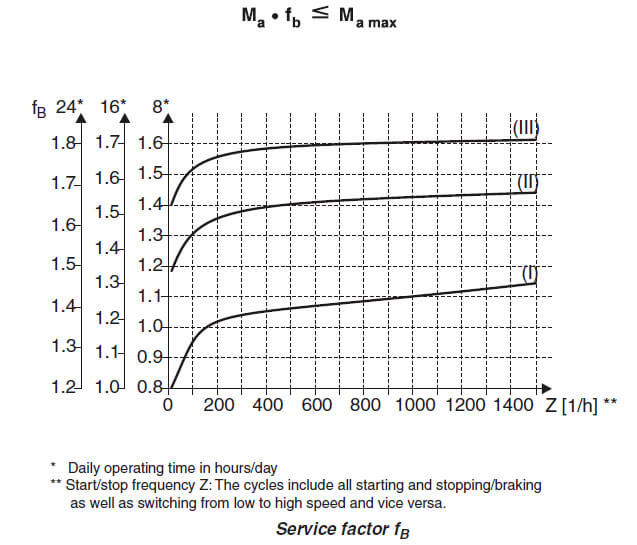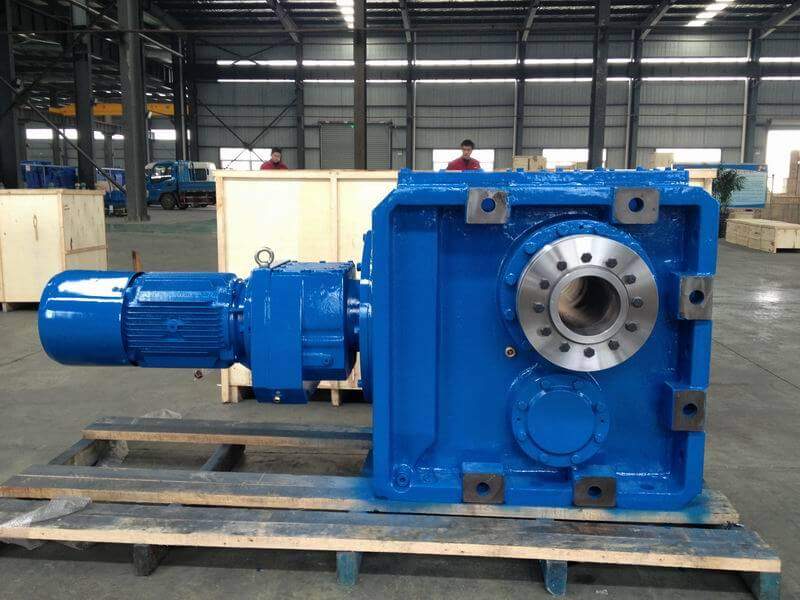The effect of the driven machine on the gear unit is taken into account with sufficient accuracy using the service factor fB. The service factor is determined according to the daily operating time and the starting frequency. Three load classifications are taken into consideration depending on the inertia acceleration factor. You can read off the service factor applicable to your application in the graphic below. The product of the ascertained service factor and the required output torque must be less than the maximum permitted output torque.

Service Factor for the gearbox reducer
Load Characteristic |
Operating Time / Day (Hour) |
||
≦ 2 hrs |
2~10 hrs |
10~24 hrs |
|
Uniform Load |
1.00 |
1.3 |
1.6 |
Medium Load |
1.3 |
1.6 |
1.8 |
Heavy Shock Load |
1.6 |
1.8 |
2.0 |
Load classification
Inertia acceleration factor
JX = Reflected inertia on the motor shaft
J = Inertia referenced to the output shaft of the gear unit
n = Output speed of the gear unit
nM = Motor speed
“Inertia at the motor end” is the mass moment of inertia of the motor and, if fitted, the brake and the flywheel fan (Z fan).
Service factors fB > 1.8 may occur with large mass acceleration factors (> 10), high levels of play in the transmission elements or large overhung loads. Please contact us in this case.
Service factor: fB
The method for determining the maximum permitted continuous torque Tamax and using this to derive the service factor
fB = Tamax / Ta is not defined in a standard and varies greatly from manufacturer to manufacturer.
Example
Inertia acceleration factor 2.5 (load classification II), 14 hours/day operating time and 300 cycles/hour produce a service
factor fB = 1.51





